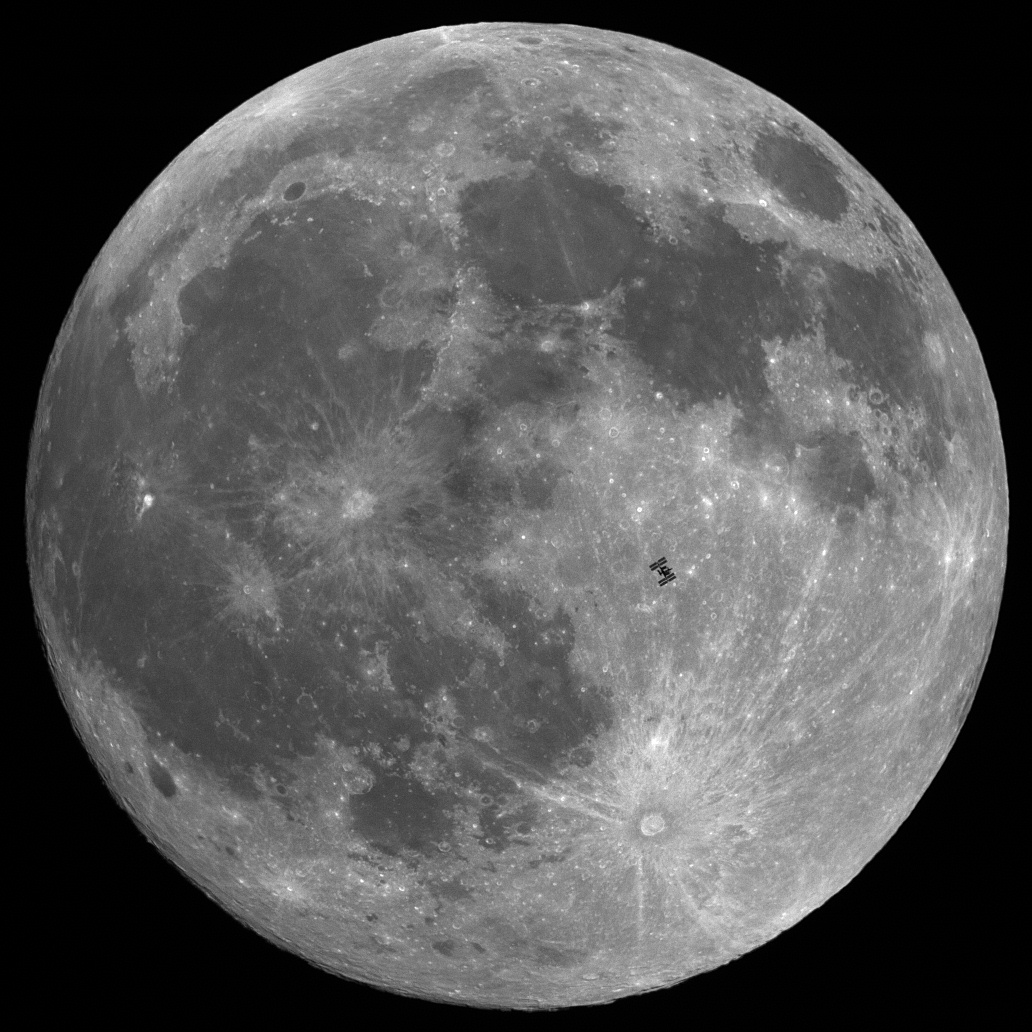Sometimes a photo can speak volumes about scale.
The photo of the Moon below was taken by Theirry Legault on December 20, 2010, when the International Space Station (ISS) just happened to pass in front of the Moon as seen from Theirry’s location on Earth. Look closely, do you see ISS?

CLICK TO ZOOM Photo-credit Thierry Legault – www.astrophoto.fr
Now for the fun part – a request to Gru on Despicable Me –
In the photo above, consider this – the Moon is about 1,000 x farther from Earth than the International Space Station. Imagine what you’d see if someone decided to carry the Moon closer to Earth so it would be as close as the International Space Station. It would therefore appear 1,000 x LARGER than in the photo above. (But as Gru brings the Moon closer, the ever larger tides caused by the Moon would lead to civilization-ending cataclysmic upheavals across the surface of the Earth – so let’s not.)
A Challenge – prove the Moon is about 1,000 times farther than the International Space Station (feel free to consult with your math teacher – they will be happy to help)
Needed information:
The International Space Station is about 250 miles (400 km) above the Earth’s surface – I got that from the ISS Tracker on this website (note that the altitude of ISS does vary a little over its orbit)
The Moon is on average 238,900 miles (384,400 km) from Earth
The Student Spaceflight Experiments Program (SSEP) is a program of the National Center for Earth and Space Science Education (NCESSE) in the U.S., and the Arthur C. Clarke Institute for Space Education internationally. It is enabled through a strategic partnership with NanoRacks LLC, working with NASA under a Space Act Agreement as part of the utilization of the International Space Station as a National Laboratory. SSEP is the first pre-college STEM education program that is both a U.S. national initiative and implemented as an on-orbit commercial space venture.
The Smithsonian National Air and Space Museum, Center for the Advancement of Science in Space (CASIS), and Subaru of America, Inc., are U.S. National Partners on the Student Spaceflight Experiments Program. Magellan Aerospace is a Canadian National Partner on the Student Spaceflight Experiments Program.

Comments are closed.